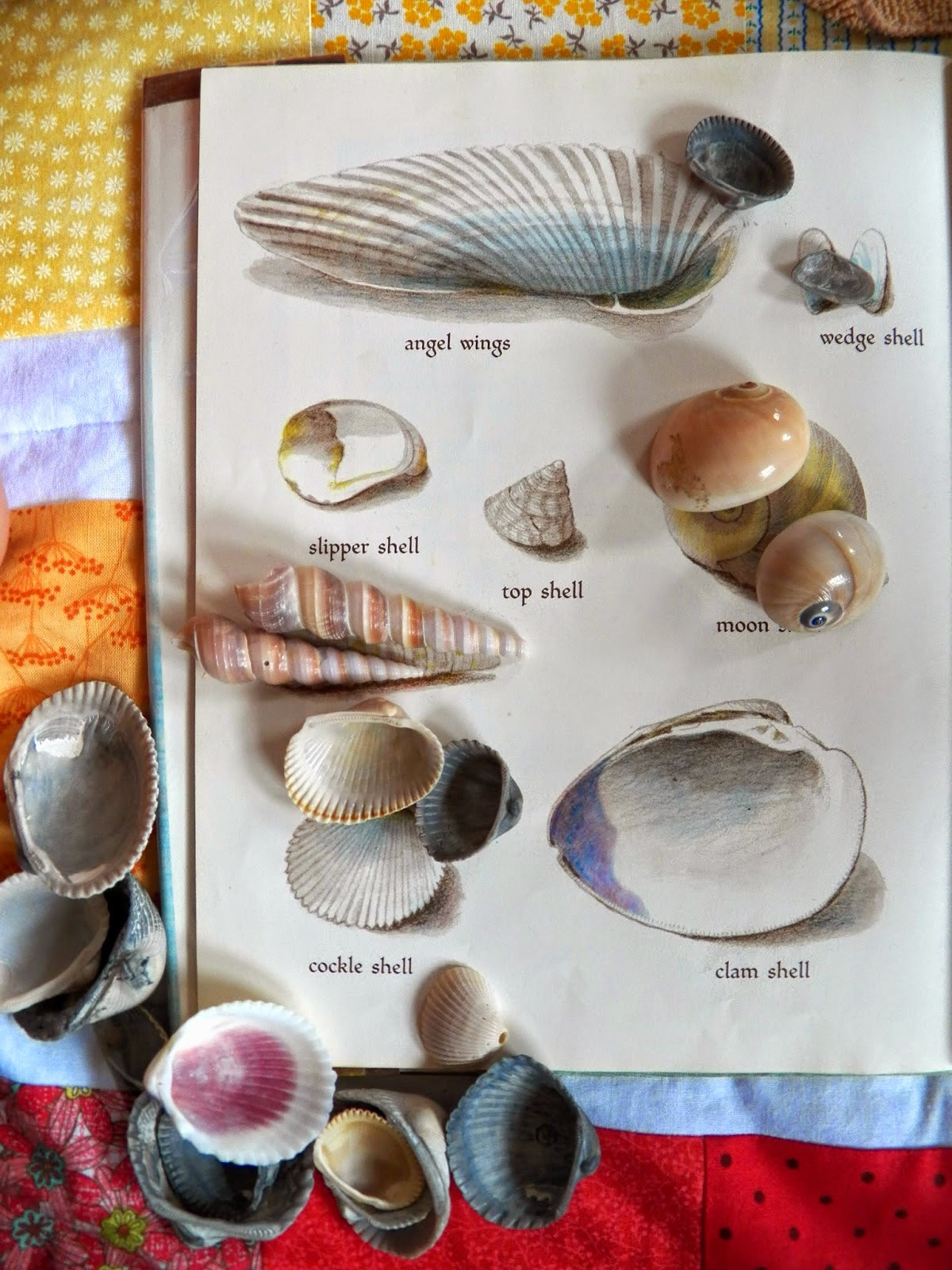Phylum Mollusca
The most common classes within the Phylum Mollusca are Cephalopods, Gastropods, Pelecypods and Bivalvia
To begin our study of mollusks, I brought out all of my shells, and we began sorting them. There was some discussion while we were doing this, as to what constituted a new category.
We decided to make our categories as broad as we could, thinking that we could make more specific identification as we studied each category.
After we had made our divisions, we looked through field guides to identify them, and wrote their names on the outside of the bags.
Pelecypods: Clams, Scallops and Oysters
Clams
We began our study with clams. We had two basic kinds of clam shells. The Amethyst Gem Clam/ Dosinias and the Lucina. We read about clams in general and these type shells in particular from books...
and then the boys sketched and wrote about them in their notebooks.
We learned that clam shells grow a new ring each year, just as trees do, and so James counted several shells to see how old they were.
Scallops
Scallops
 |
student (age 18, Special Education) notebook pageIt swims by opening its shell and then clapping it closed quickly. this pushes the scallop through the water in short bursts of speed. |
A student noticed that the field guides use measurements as a way to help make identification for the various types of shells. We measured our shells and added this to our pages.
If our sketches were larger than life, we just measured the actual shell and put it's actual measurement next to the sketch.
 |
| student (age 11) notebook page Giant Atlantic Cockle They can jump several inches using their powerful foot. |
James liked to try to identify them exactly, and not just the group his chosen shell was in.
Oysters and Pearls
They are getting more used to making their own notebook pages, knowing what things I expect them to include (picture and so many bits of information). Alex sketched the oyster in pencil, traced the outline with marker and then shaded the rest with colored pencils.
I don't worry too much about spelling or, in this case, tense mistakes. We will be working on these topics this coming year and I believe that this will be reflected in their work.
We had noticed that many of our bivalve shells had little holes in them. The boys thought they would be useful in making a necklace with them. We learned that they had been made from predators such as the Whelk which drill the hole into the clam shell in order to suck out the clam.
Alex wanted to draw a hermit crab, even though it is not a mollusk, but a crustacean, so we were able to discuss this and he wrote about the fact that the hermit crab uses an abandoned sea snail shell for its shell.
Oysters and Pearls
They are getting more used to making their own notebook pages, knowing what things I expect them to include (picture and so many bits of information). Alex sketched the oyster in pencil, traced the outline with marker and then shaded the rest with colored pencils.
Class Bivalvia: Jingle Shells
 |
student (age 8) notebook pageJingle shells anchors (sic) itself to rocks. |
Class Gastropoda: Wentletraps and Whelks
 |
| student (18 years old, special needs) notebook Wentletrap Named after the Dutch word for "spiral staircase." They eat anemones or coral. Whelks The most common predator of bivalves. |
Hermit Crab Shells
 |
student (18 years old, special needs) notebookA hermit crab doesn't make the shell in which it lives. The shell is made by a snail that has died. |
inspiration:
- clam cookies at Living Locurto
- seashell printable at The Crafty Classroom
- sorting shells at Tea for Monkeys
- Exploring Creation with Zoology: Swimming Creatures, Jeannie Fulbright
- Seashore Life, Herbert Zim (Golden Field Guide)
- Lift-the-Flap Classification Chart for Invertebrates at Ellen McHenry's Basement Workshop













